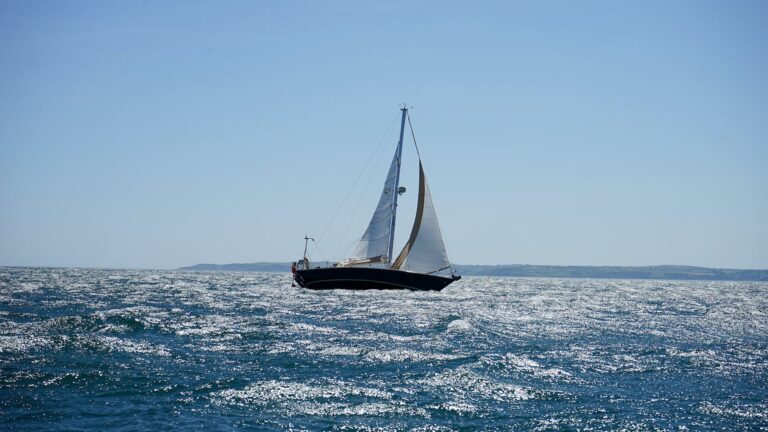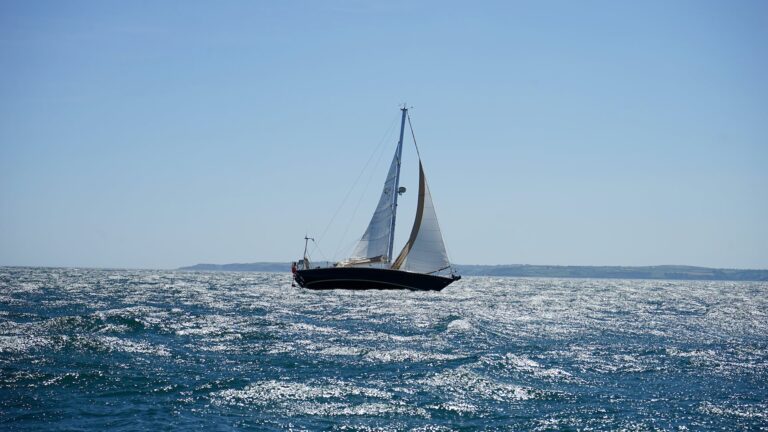What is the scale for sailing charts?
- Introduction
- Harbor-scale charts
- Approach-scale charts
- Coastal-scale charts
- General-scale charts
- Overview-scale charts
- Berthing-scale charts
- Planning-scale charts
- Different types of scales for different uses
- What is a nautical chart?
- Conclusion
Scales for Sailing Charts Explained
Are you planning a sailing trip and want to know what scale you should use on your sailing chart? Knowing which map scale to use is essential to ensure that your journey is safe and successful, so in this article we’ll take an in-depth look at the different scales available and how they should be used when sailing.
Harbor-Scale Charts
Harbor-scale charts are typically used for navigating in ports or marinas, and have a scale of 1:10,000 to 1:50,000, making them highly detailed and easy to read while navigating in close quarters with other vessels or obstacles such as buoys or rocks. These maps show depths of the water, hazards in the area, navigational aids such as lights and buoys, as well as any other important information about the area that might be useful for sailing in that particular port or marina.
Approach-Scale Charts
Approach-scale maps are used for navigating nearshore areas that are close to ports or marinas and have a scale of 1:25,000 to 1:80,000. These maps provide detailed information about the coastal area including depths of water, navigational aids such as lights and buoys, as well as any other important information that might be useful while navigating nearshore areas close to ports or marinas.
## Coastal-Scale Charts
Coastal-scale charts are used for navigating along the coastline or close offshore waters with a scale of 1:80,000 to 1:250,000. These maps are highly detailed and show depths of water, navigational aids such as lights and buoys, as well as other useful information about the coastal area such as currents and tides which can be useful when sailing along the coastline or close offshore waters.
## General-Scale Charts
General-scale maps are used for navigating midshore waters with a scale of 1:250,000 to 1:1 million; they provide less details than coastal or approach maps but still provide enough information to safely navigate midshore waters including depths of water, navigational aids such as lights and buoys, tidal ranges and current directions which can be very useful when sailing midshore waters away from the coastline or nearshore areas close to ports or marinas.
## Overview-Scale Charts
Overviews are typically used for long range navigation with a scale ranging from 1:2 million to 1:10 million; they provide less details than general or coastal maps but still provide enough information to safely navigate longer distances including depths of water (although these will not be as accurate as more detailed maps), navigational aids such as lights and buoys (although these will not be shown on an overview map), tidal ranges and current directions which can all be very useful when sailing longer distances away from landmasses or coasts.
## Berthing-Scale Charts
Berthing charts are typically used for navigating within ports or marinas with a scale of 1:2,000; these maps are highly detailed showing depths of water in great detail (which can be very useful when entering ports/marinas), navigational aids such as lights and buoys (which can also be very helpful when entering ports/marinas), any potential hazards in the area (such as rocks) which might need avoiding while entering/exiting ports/marinas etc., making them an essential tool when sailing within port/marina boundaries.
## Planning Scale Charts
Planning Scale Charts have a relatively large scale ranging from 1:10 million up to 1 million; these maps usually provide only basic information about coastlines, land masses etc., which makes them ideal for planning long distance trips but not so ideal for executing them due to their lack of detail compared with more detailed map scales mentioned above; however they can still be very useful when planning longer distance trips by providing an overall view/perspective on where you intend on going which could help you safely plan your voyage without running into unexpected obstacles along your way (for example if you’re planning on crossing an ocean).
## Different Types Of Scales For Different Uses
As we’ve seen above there are different types of scales available depending on what type of sailing you intend on doing; harbor/berthing scales are ideal for navigating within ports/marinas whereas overview scales are great for planning long distance trips but not so good when it comes down executing them due to their lack of detail compared with more detailed scales like approach/coastal/general etc.; all these different types of scales should ideally be used together depending on what type of sailing one intends on doing in order to ensure safe navigation throughout their voyage/journey at sea!
## What Is A Nautical Chart? A nautical chart is essentially a map specifically designed for use by sailors; it contains important information about the local environment including depths of water (useful when navigating near shallow areas), any potential hazards that may need avoiding (such as rocks) , navigational aids such as lighthouses/buoys etc., tidal ranges and current directions which can all be very helpful when navigating at sea! It’s important therefore that nautical charts are always up to date otherwise they may lead sailors into danger!
# Conclusion
In conclusion it’s clear that knowing which map scale to use is essential if one intends on embarking upon a successful voyage at sea; harbor/berthing scales should ideally be used within ports/marinas whereas approach/coastal/general scales should ideally be used nearshore & midshore areas respectively before finally using overviews at sea if long distance voyages need planning! Nautical charts also play an important role providing sailors with vital information about their local environment ensuring safe navigation throughout their journey at sea!







